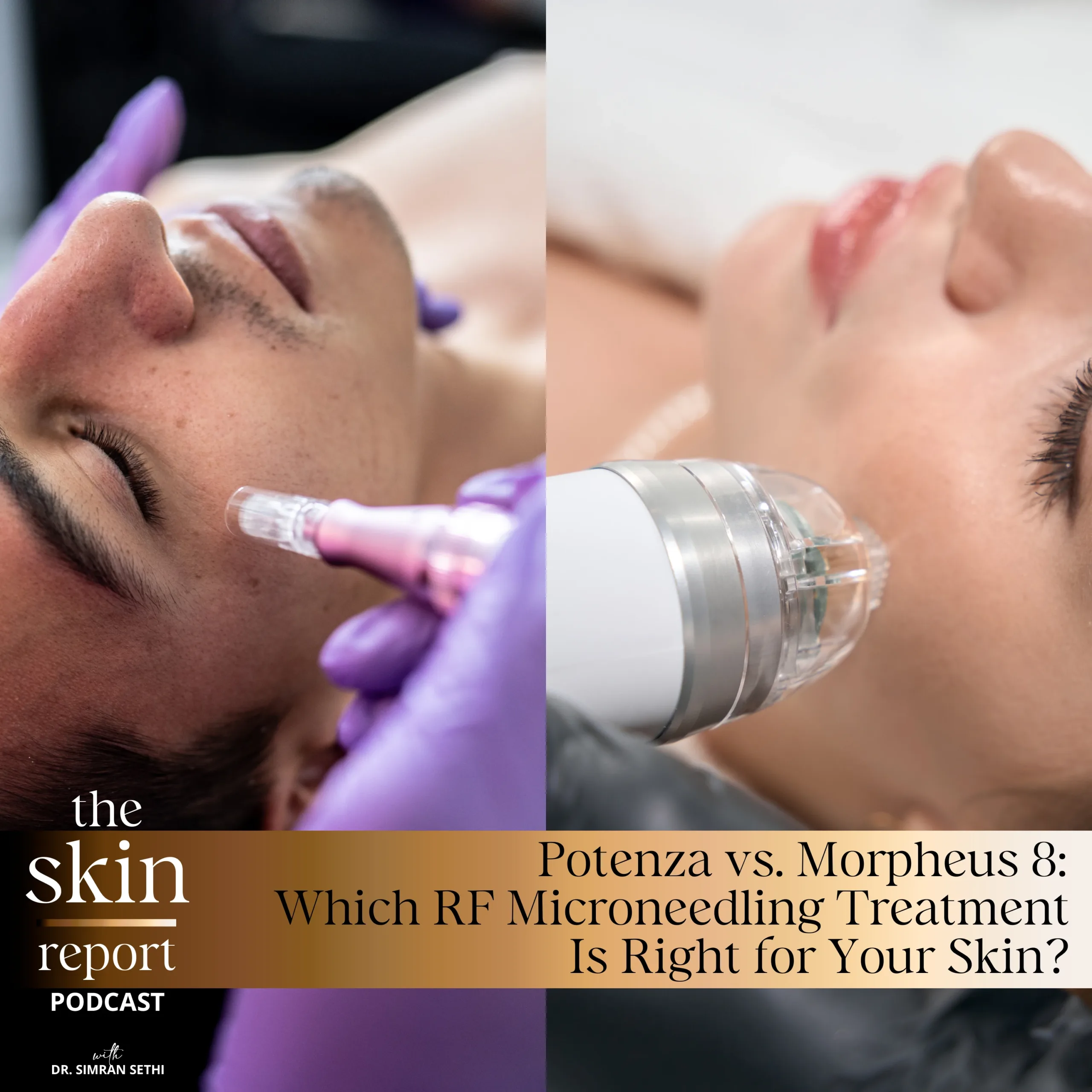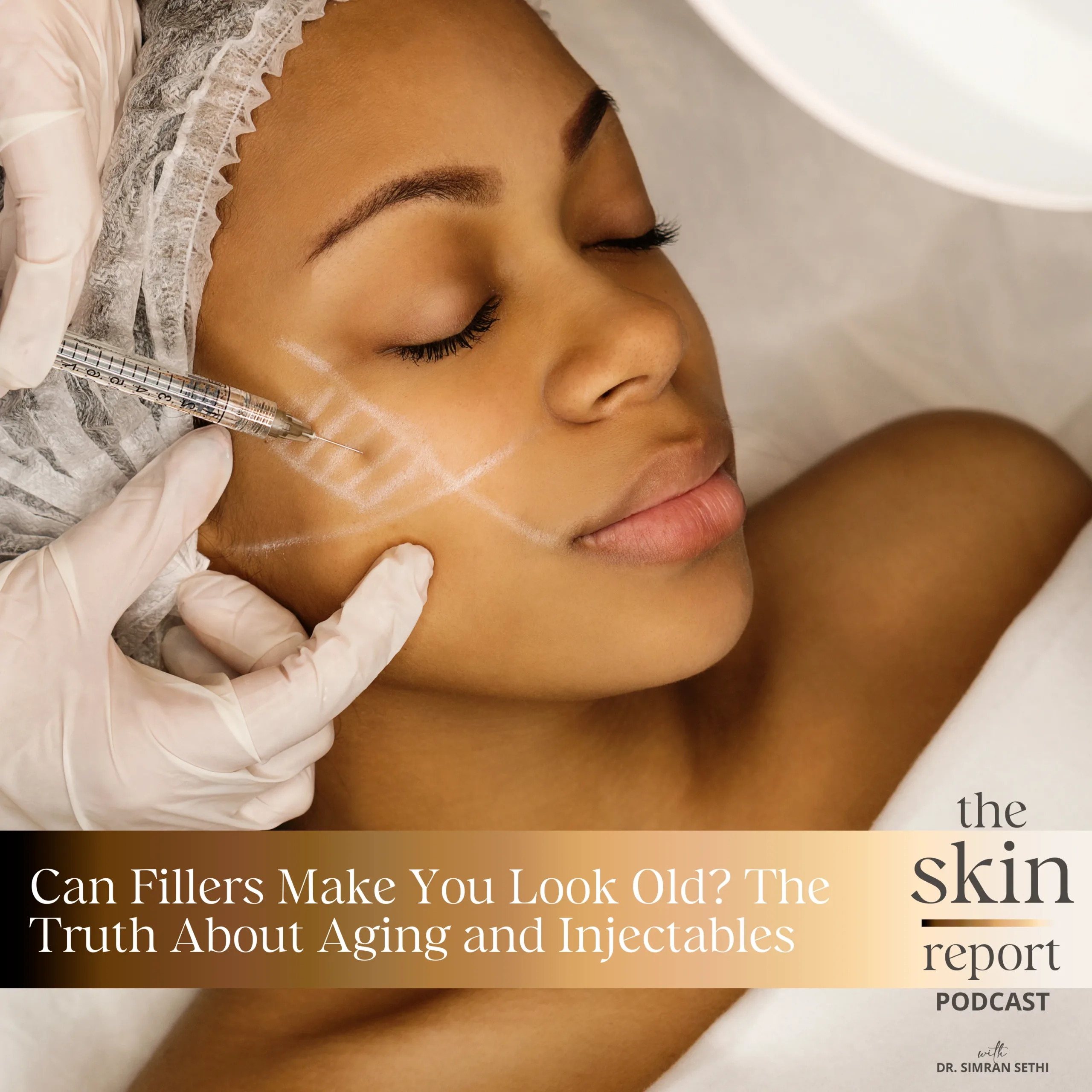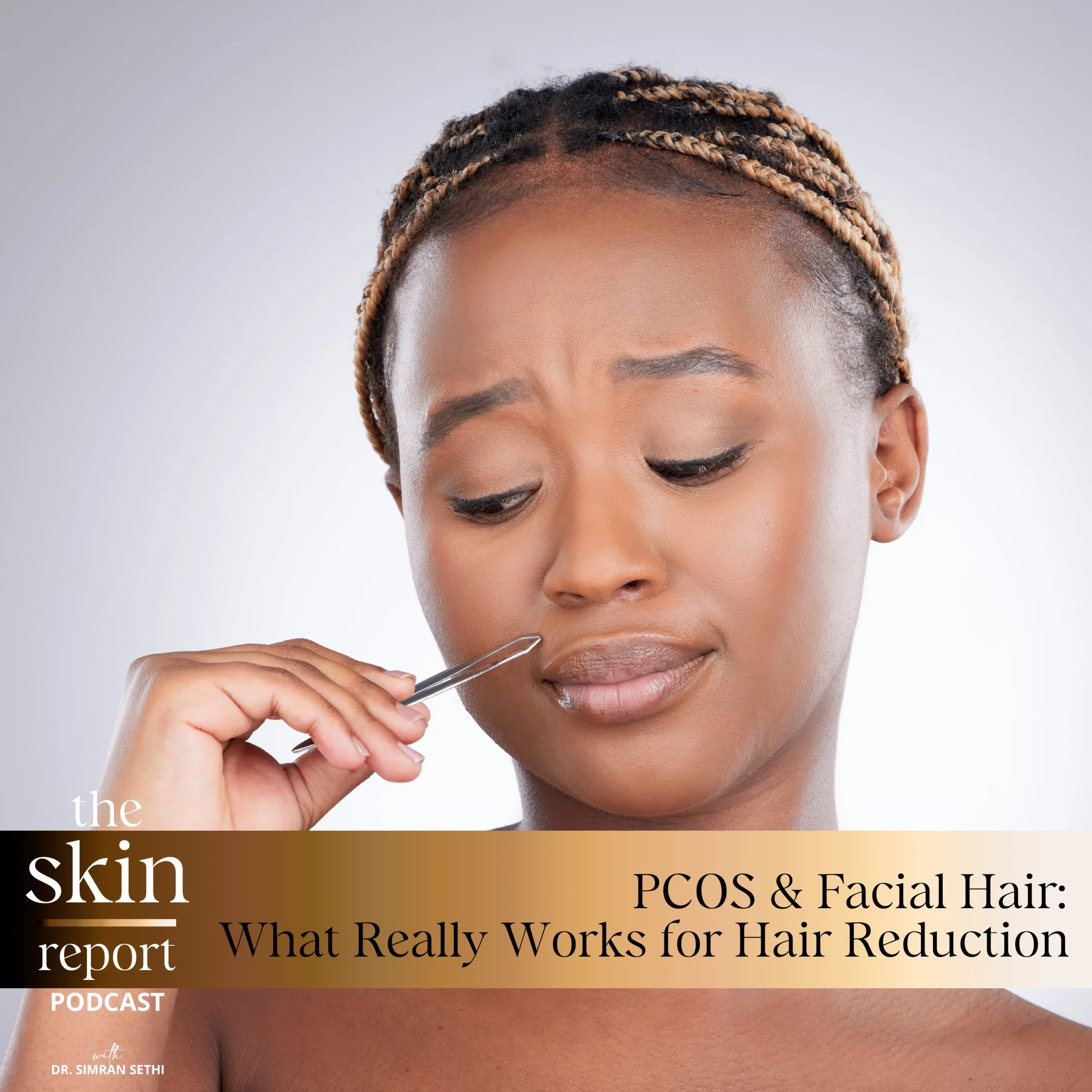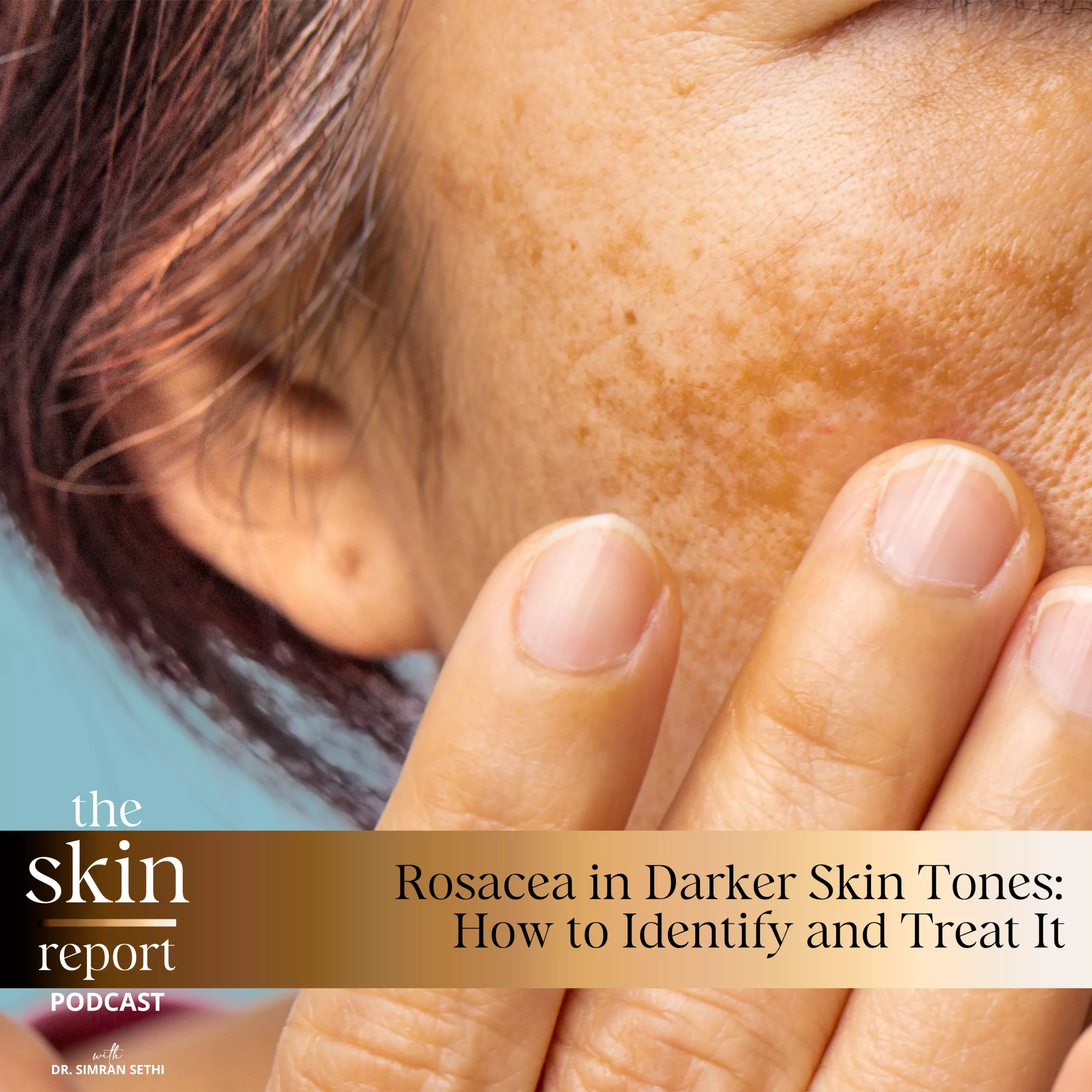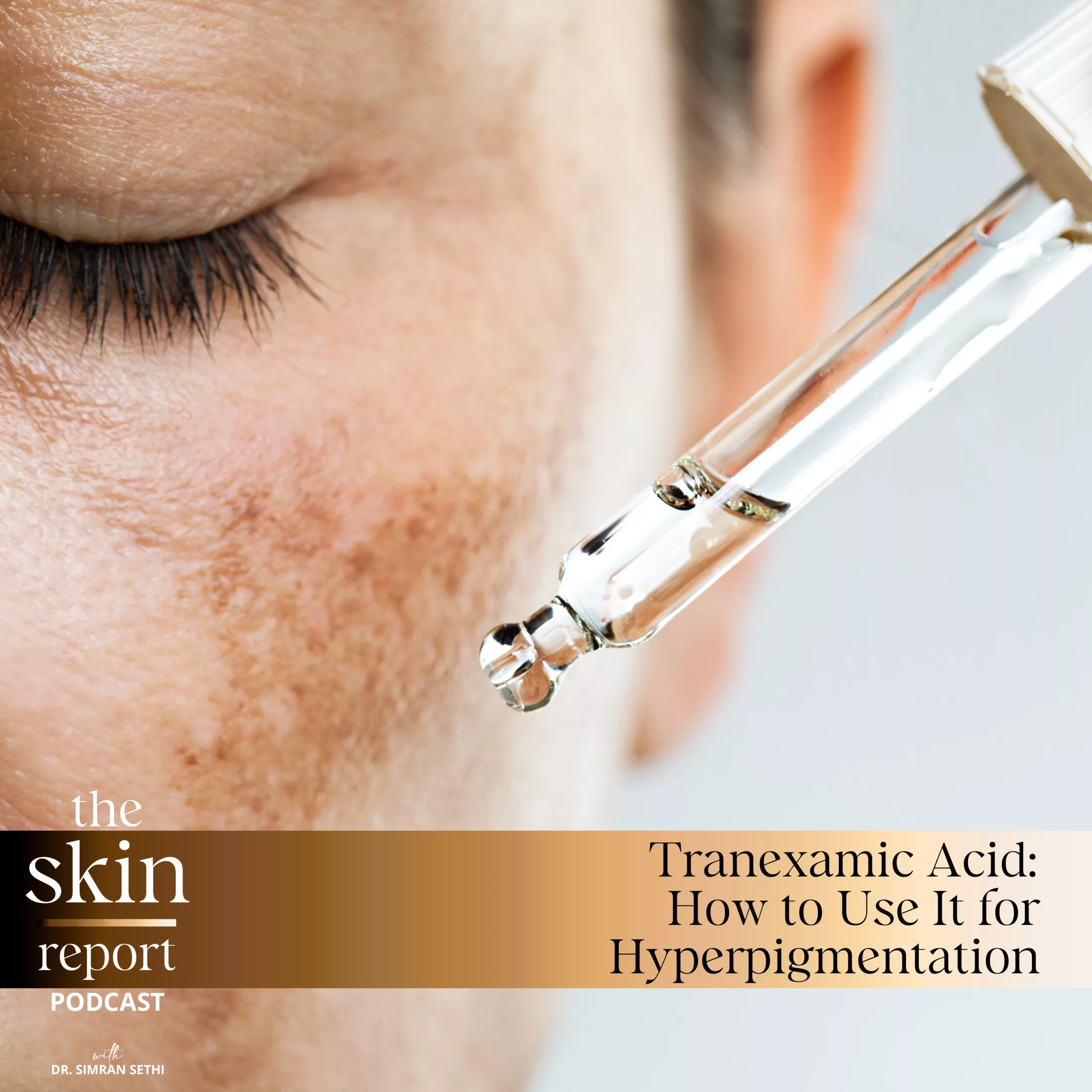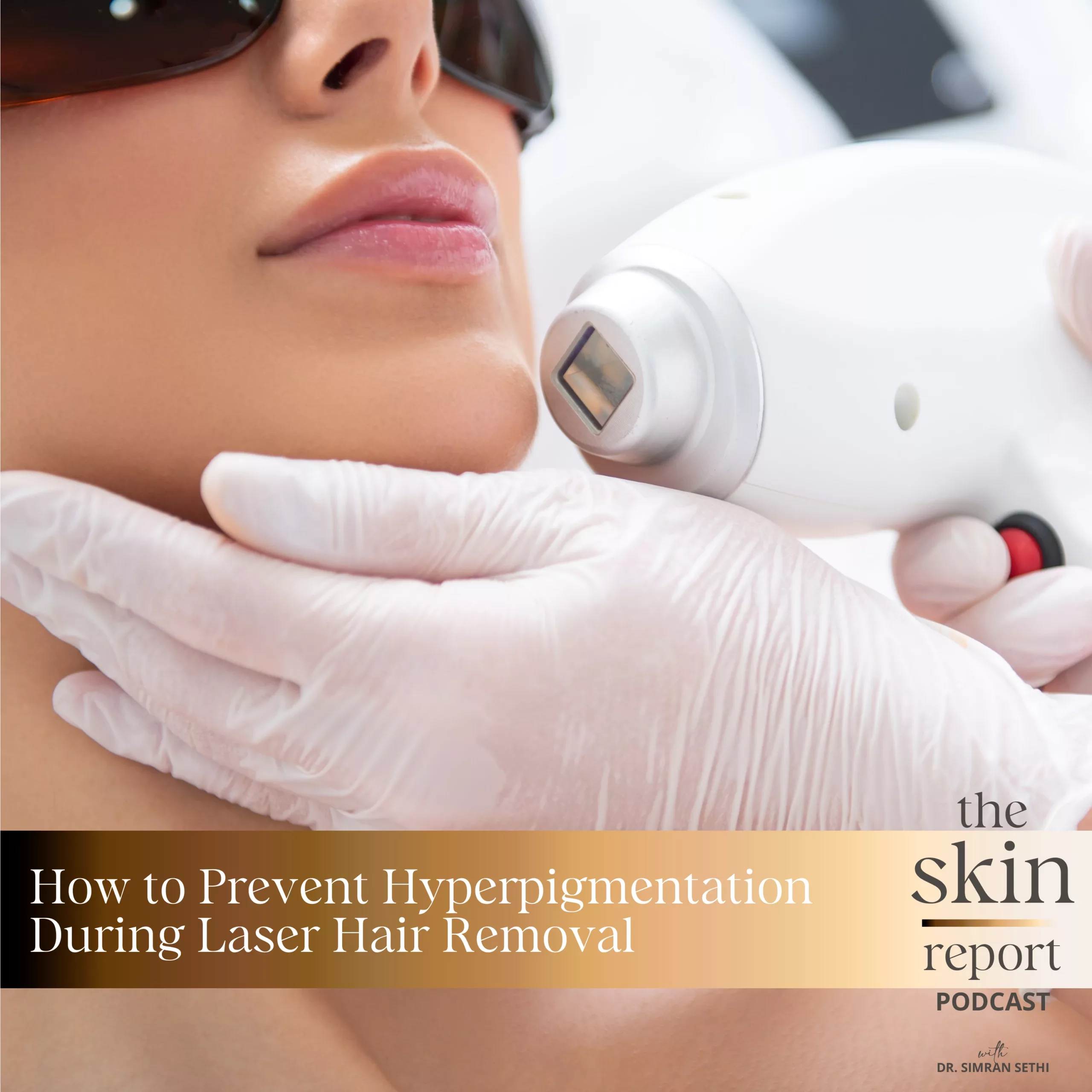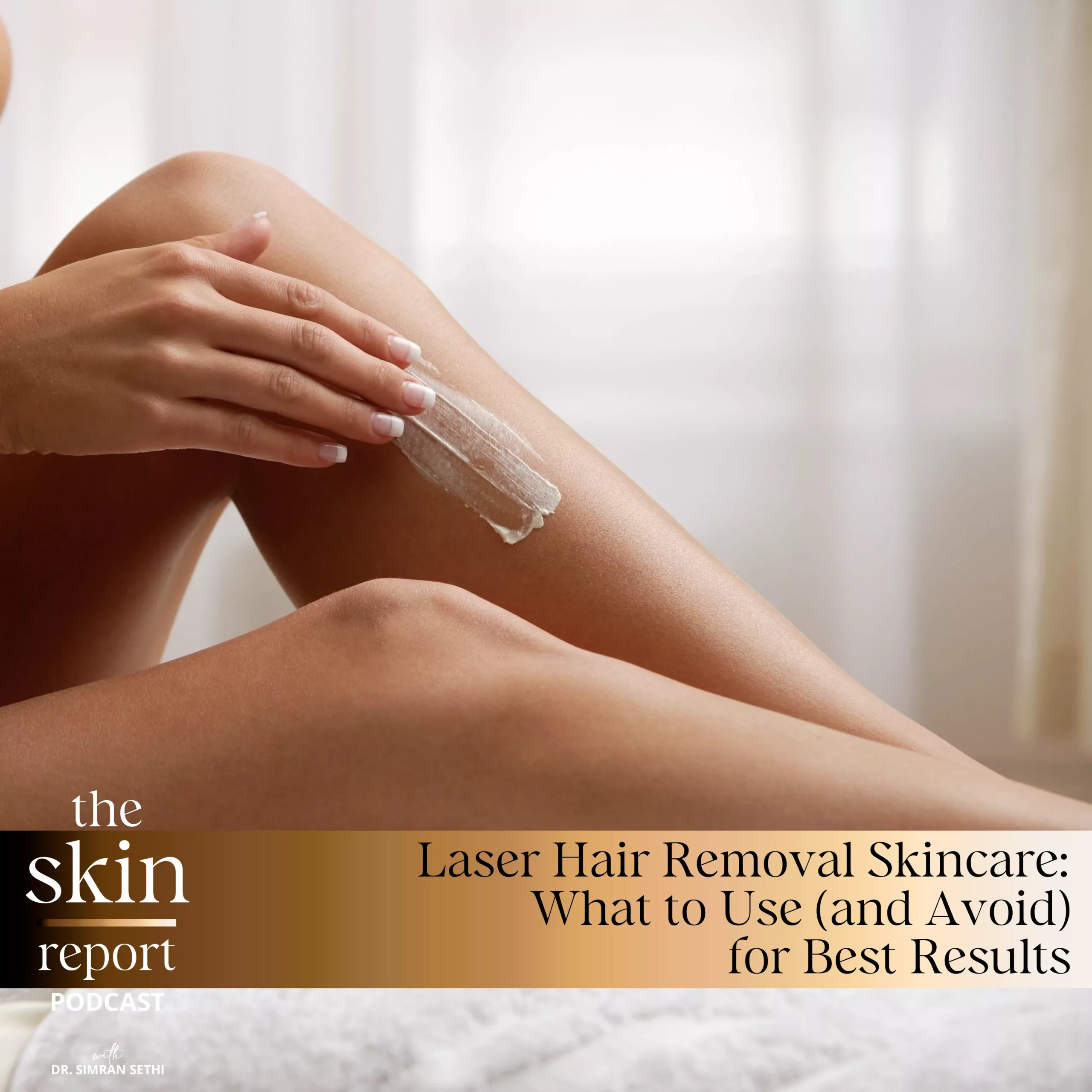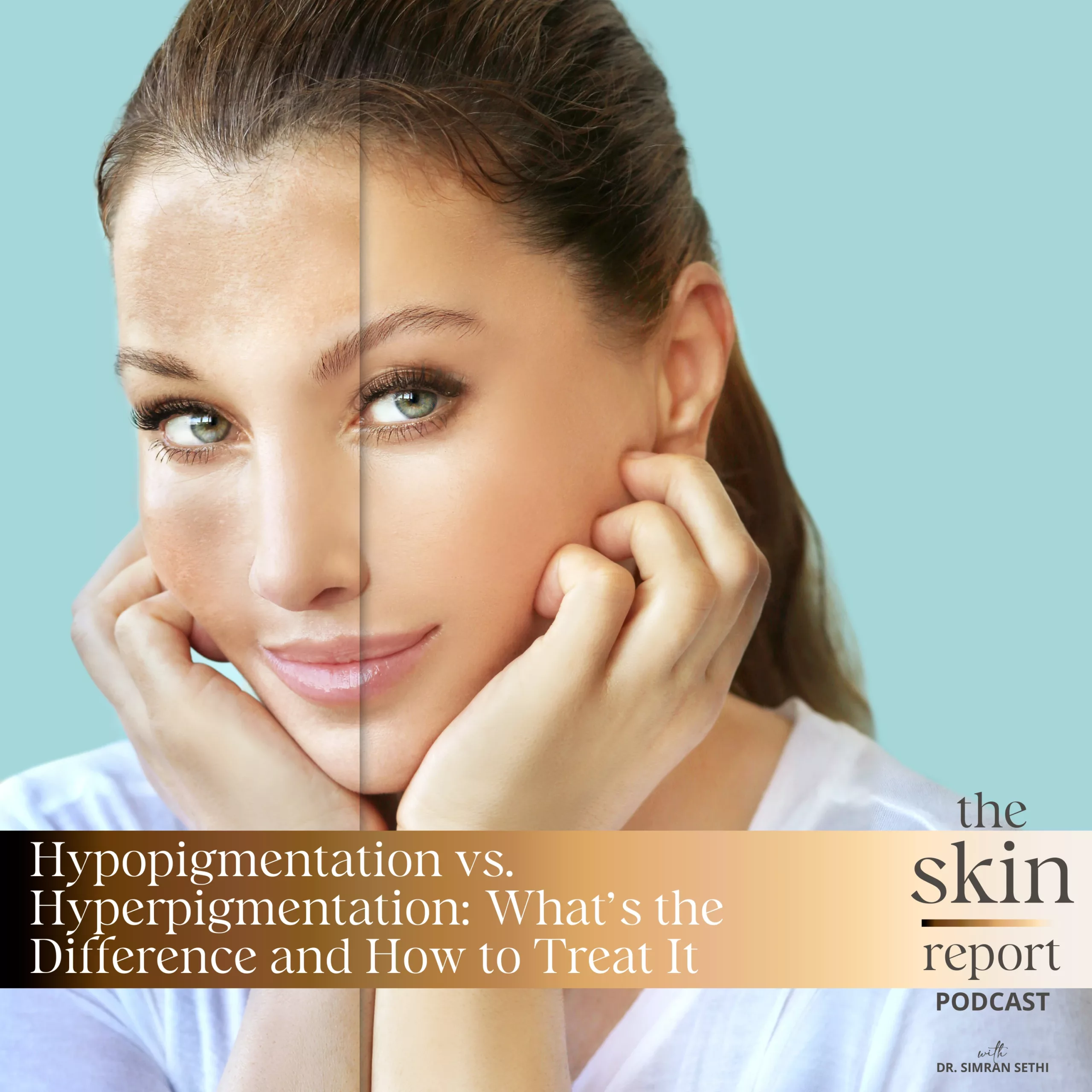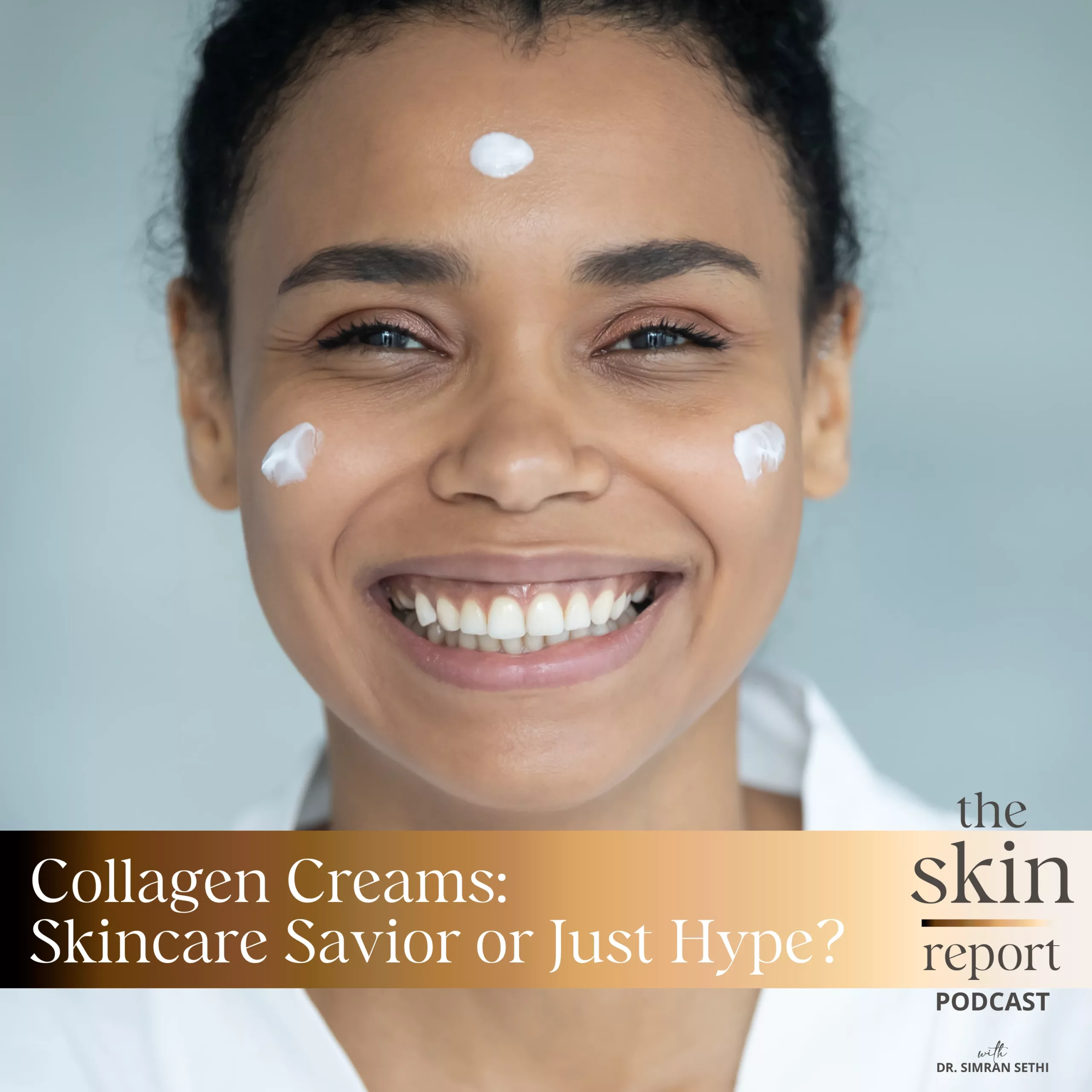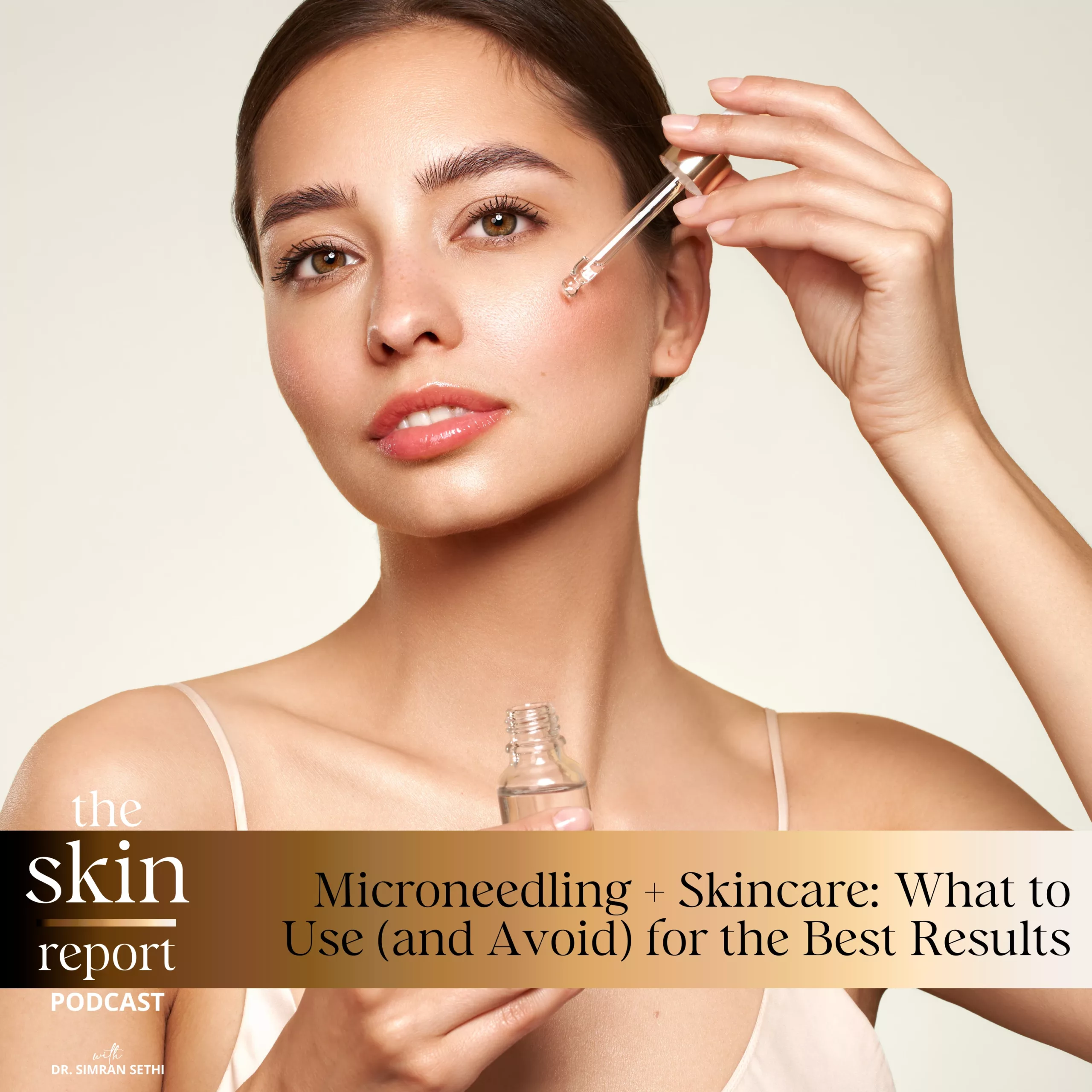This transcript was exported on August 9, 2023 -view latest version here.
Skincare can sometimes feel overwhelming, whether it’s finding the right products, ingredients, or treatments. There’s a lot out there, but not always for people of African, Hispanic, Middle Eastern and Eastern South Asian descent. That’s why I set out to educate myself and others so that we can all feel beautiful in our skin. Hello and welcome back to The Skin Report. I’m Dr. Simran Sethi, an internal medicine doctor, mom of three and CEO and founder of Skin by Dr. Sethi and Renew MD Medical Spas. Today is special to be because it’ll be our last episode of season two, but don’t worry, we’ll be back in a few weeks with an all new season and format. On this episode, however, we will be taking a look at some of our most frequently asked questions, so let’s get it. The first question I want to answer today is, do snails get harmed in the process of making snail mucin.
Through Korean beauty brands, we in the West have been introduced to snail mucin in our skincare, but before we can answer the question of if snails are harmed, let’s look into why we would use their mucin in our products. Mucin is a protein snails excrete that contains antioxidants like vitamin A and E and minerals like zinc and manganese. This means that snail mucin can boost collagen production and hydrate the skin. Snails excrete mucin when they’re stressed to help protect the snail from injury, which sounds strange in relation to skincare, but is not so different from our own skin building process. Every skin procedure like laser resurfacing or microneedling is performed to create a controlled injury and stress the skin to trigger an accelerated new skin building response. The snail is doing this to some extent. We are then taking the substance it secretes because of the stress response and applying it to our skin.
Not only is it incredibly hydrating, it can also be used in any skin type. Now are snails harmed to this process? It’s important to note that they’re not killed, but nor is it possible to fully understand an animal’s inner world. They are stressed to make the mucin, and this can look like placing the snails in a bumpy environment similar to the outdoors to elicit their natural stress response. Another method could be placing the snails in a special steam bath to help harvest the mucin. So are the snails harmed? It depends on the brand, but they are biologically stressed. Snail mucin is not vegan friendly, and while there are not any vegan friendly snail mucin products, there are numerous alternatives that deliver the same benefits of snail mucin. My line includes alternatives like the Ultra Glow Moisturizer or the Hyaluronic Plump & Protect to deliver similar benefits while staying vegan and not stressing animals.
When we return, we’ll tackle a question on Botox. Botox is a popular aesthetic treatment used to target fine lines and wrinkles and prevent more from forming. Botox is secreted by a bacteria that acts as a neurotoxin that stops a signal between our nerve cells and muscle to prevent muscle contraction when injected into muscle, Botox stops its movements. Hence why Botox is so often injected into certain facial muscles. Botox is particularly helpful in reversing muscle memory, subconsciously frowning at the computer screen, crinkling our forehead and other involuntary movements tha tcause wrinkles without us realizing. By arresting the muscle, it gives the face a chance to relax and unlearn these habits. Botox is temporary. It remains active for only three to six months, though in my clinical experience, it usually just lasts three months for most people. This means that the effect of Botox is at its peak for two to three months, and after two months, Botox will start to lose its effect and by three months it’ll not be active anymore and your muscles will start regaining movement.
In order to continually prevent muscle movements, you will need to get a new set of Botox injections every three to four months. So this begs the question I often receive, is Botox addictive. Botox is actually a brand name and the product itself is called botulinum toxin, much like Kleenex versus tissues. So when we’re talking about Botox being addictive, we are really looking into the addictive nature of the botulinum toxin. On a physical level, botulinum toxin is not addictive. You cannot physically become addictive to Botox the way you can with drugs or alcohol. That being said, some people can become psychologically addicted to the results of Botox provides. As with any aesthetic treatment, you can see the results. After a while, those results fade with time and is perfectly normal to keep up a Botox routine. However, there is a misconception that the more units of Botox you receive, the younger you will look, but getting Botox is as much of a science as it is an art.
An experienced practitioner will know just how many units can be injected, where remember that the scary pictures on the internet that show people with completely frozen faces only happens when people go to inexperienced injectors. My patients and I always laugh about the fact that even after a decade of getting Botox injections, their family and friends have no idea they get injections, and that is exactly how it should be. It’s important to remember that you physically cannot become addicted to Botox itself. However, an experienced practitioner will voice their concerns about decisions that would not be beneficial to their patient and their patient’s mental health.
The next question I want to answer is about pets. I have a dog named Bear and he’s my world, but how does living with and touching your pet impact your skin hygiene? Should you wash your hands after? This is an interesting question, and as those of us who have pets know that it is simply impossible to resist cuddling with them. So the question of skin hygiene does become important. I looked at a number of scientific journals to answer this question and have concluded that touching or snuggling with your pet, namely dog or cat, will not have any effect on your skin’s health or hygiene. In fact, studies have repeatedly shown that the incidence of eczema and asthma is significantly lowered when children are exposed to pets early in life. Pets diversify our skin’s microbiome, which actually confers better immunity and protection from eczema and allergies.
Interestingly, I also found an article that proves that dogs and their human owners tend to develop allergies to the same allergens in the air. It did not explain why, but it is definitely an interesting finding. So we now have enough evidence to know that touching our pets is very safe and hygienic and does not require additional cleansing of her hands or face, and as Bear’s mom, this makes me so happy. Before we wrap up today’s episode, I want to address a final question, which is actually a social media trend. If you’ve been following skincare routines on TikTok or Instagram over the past year, you may have some influencers icing their skin, but what are the benefits of icing your skin? Does skin icing, tighten pores? I’m very glad someone recently asked me about the popular trend of skin icing. To start, let’s look at what skin icing is and the benefits and dangers associated with it.
There are different methods you can take such as using ice rollers or plain ice cubes to run across your skin. I feel that ice rollers are better for cooling the skin as they’re easy to use and allow for a more uniform application than ice cubes. Ice cubes can also be too cold and cause an ice burn, which we will discuss in just a little bit. But if you do not have an ice roller handy, I would recommend just putting a spoon in the freezer and using that instead of ice cubes or buying a roller. We all have metal spoons at home. They freeze very quickly and warm up quickly, which is an important safety factor we’ll be addressing in a bit. Skin icing enthusiasts on social media claim that applying ice to the skin can tighten it, shrink pores, reduce puffiness, and even erase dark spots.
Most of these claims are false except for one. Applying ice under the eye area can reduce puffiness, but that’s about it. When you apply ice to the skin, it does not tighten pores skin or even our pigmentation. Ice can be beneficial to reduce swelling after a skin procedure or to target under eye puffiness, but it should be done carefully. If you apply ice to one part of your skin for too long, you run the risk of an ice burn. Exposing skin to ice freezes the tiny blood vessel supplying the skin, depriving that area of oxygen and subsequently causing skin breakdown much like frostbite. In my practice, I’ve seen a few patients with darker skin tones that have overzealously ice their skin and developed longstanding hyperpigmentation or dark patches on these areas because the icing and lack of oxygen broke down their skin barrier. So now is a good time to talk about how to safely use ice on your skin.
First, avoid directly applying ice cubes or ice packs as these can be much colder than an ice roller or spoon and stay cold for longer periods of time. Second, only cool your skin for 15 seconds or less. Icing skin for longer periods will increase the chances of freezing the blood vessels and causing skin breakdown. Overall, skin icing can be helpful when addressing post-procedure puffiness or puffiness in general, however, there’s a safe and effective way to do it. I hope you enjoyed our last episode of season two. I’ve had so much fun tackling subjects like electrolysis, scalp health, the power of melanin and more. We will be back later this month with season three, which will include more trending topics and more interviews with experts. If you’d like more of this content, let us know. We are a women of color owned brand and any likes, reviews, ratings and shares truly help to boost the podcast and get in front of others like yourself. Thanks for listening, and until next time, love the skin you’re in and celebrate your beauty.
If you’d like to learn more about science-backed skincare or medical aesthetic treatments, please subscribe to and turn on notifications for the skin report so you always know when a new episode is up. We have a newsletter that you can sign up for on skinbydrsethi.com so that you can stay up to date on all our latest products and more. Additionally, if you have a skincare question or want to make an episode topic recommendation, please message me at theskinreportbydrsethi.com, which is linked in my show notes, and I’ll be sure to answer your question in an episode soon. We’ve received some great questions so far and I will try and answer them at the end of every episode, so keep them coming.
Transcript by Rev.com


